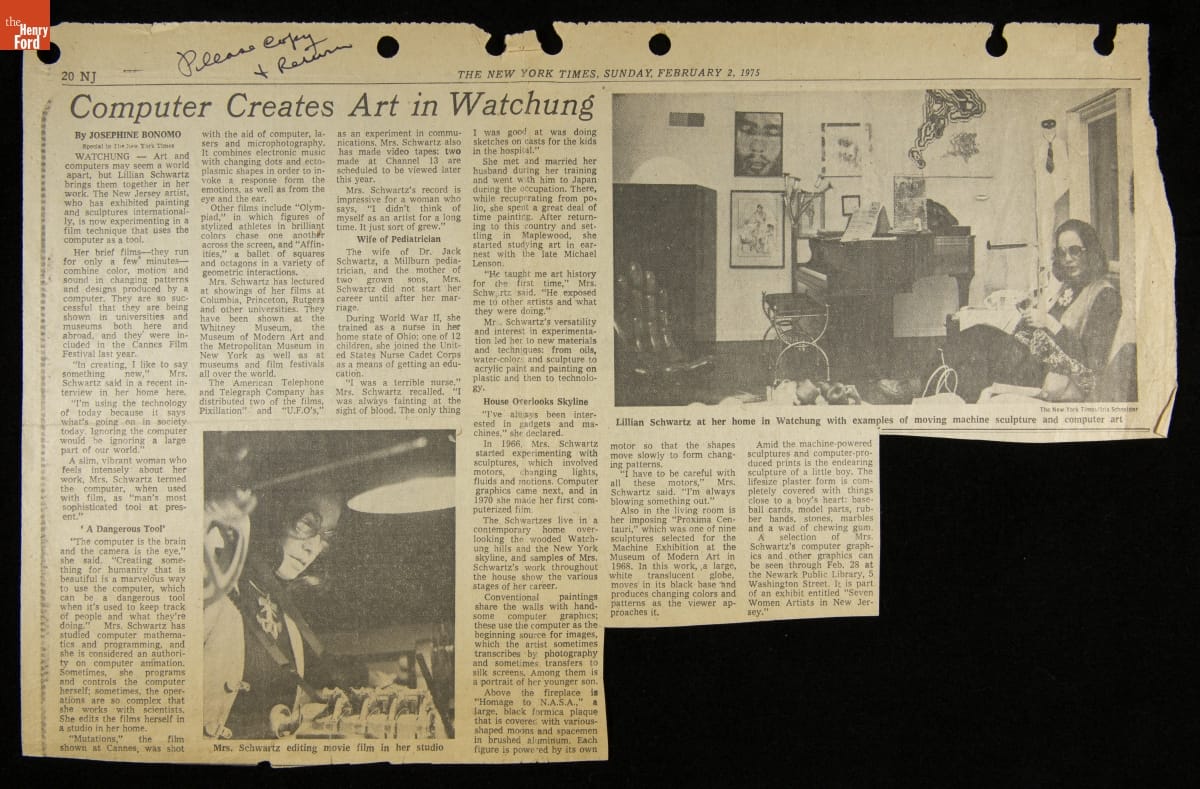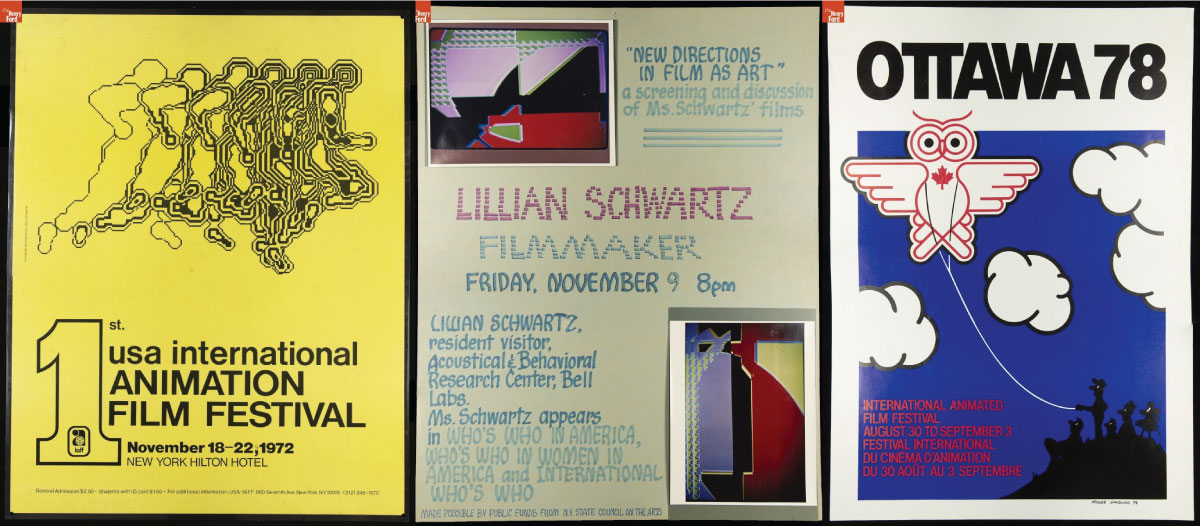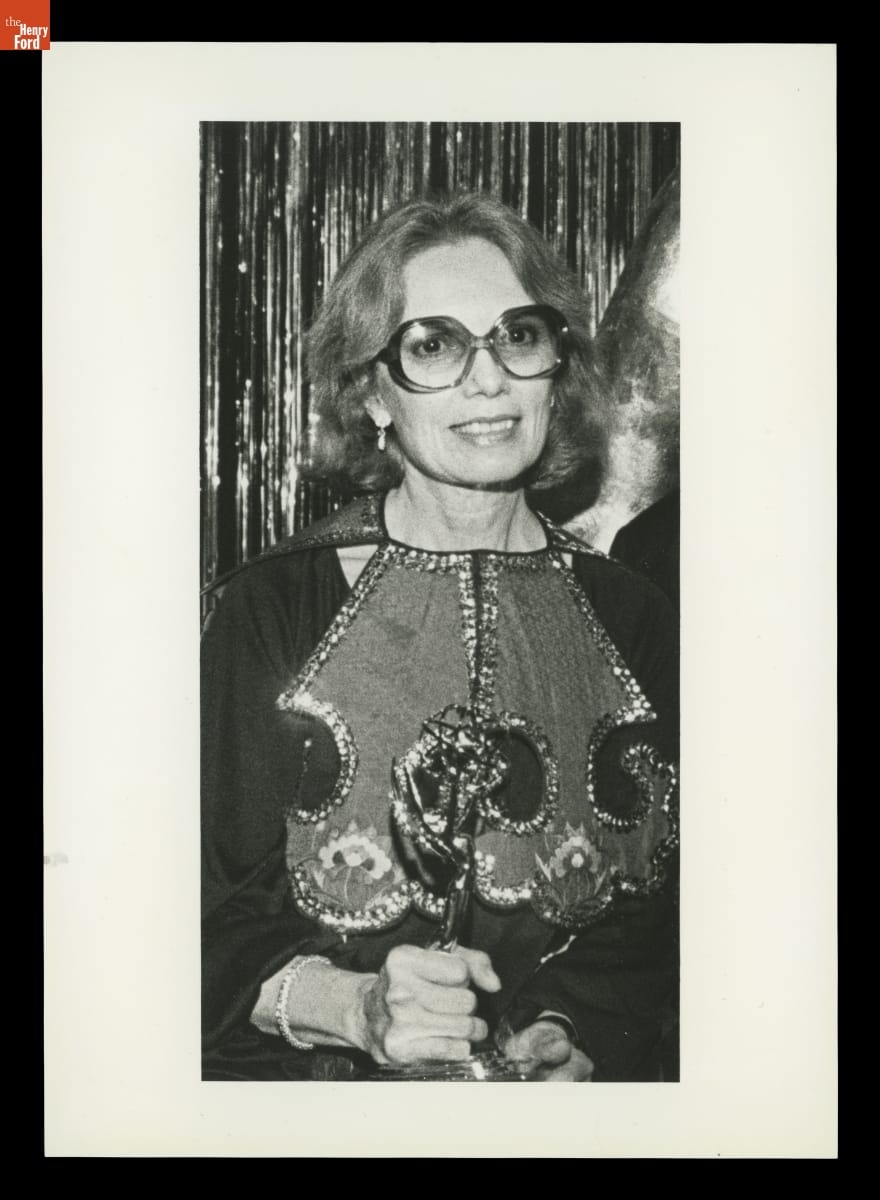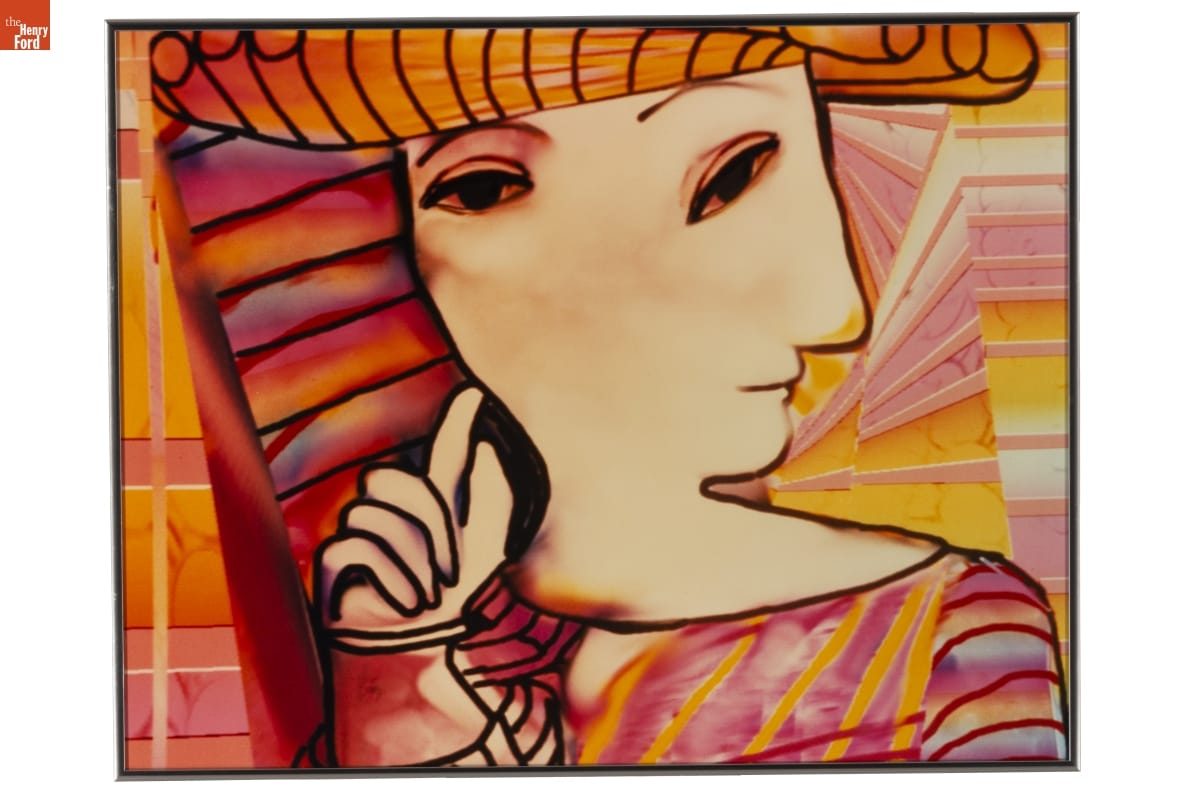Is it really art? Lillian Schwartz, Computer Art and Artificial Intelligence
“An oil painting by Matisse of a humanoid robot playing chess.” “An astronaut riding a horse in photorealistic style.” “An armchair in the shape of an avocado.” These are only a few input suggestions for the image generation platform known as Dall-E 2. In 2021, the company OpenAI launched the first iteration of Dall-E, and it quickly took the internet by storm. The program relies on a combination of machine learning techniques and artificial intelligence — or AI — to produce unique images from natural language text prompts.
But how unique are these images? Programmers, scholars and news anchors alike wrestled with this question in late 2022. The long-term consequences of technologies like Dall-E — including the chatbot ChatGPT — are still evolving. Some people see AI as a helpful aid for professional and personal creativity; others decry it as the end of art-making as we know it.
Like OpenAI's prompts suggest, Dall-E can mimic the style of other artists. Many artists' images, while visible on the internet, do not belong to the public domain. But Dall-E still mines their work to produce its own works. Is this fair practice? Is Dall-E stealing, or is it learning, like an apprentice learns from a master? Is Dall-E itself an artist?

“Computer Creates Art in Watchung,” New York Times, February 2, 1975. / THF706051
These are not new questions. From the earliest days of computer art, people have struggled to define the limits of creativity when it comes to machine intelligence. On February 2, 1975, The New York Times ran an article about artist Lillian Schwartz addressing this very topic. Journalist Josephine Bonomo's article was titled "Computer Creates Art in Watchung." Bonomo describes the computer as "complex," but only a "beginning source" for Lillian's work. Even though Lillian was not using AI to create art in the mid-1970s, the title of this article still implies Lillian’s computer deserves credit.
Bonomo's article reflects the novelty and mysticism of the types of mainframe computers that Lillian was using in the 1970s. These colossal and expensive machines were often reserved for university research, government agencies and large companies. Lillian's only access to computers was through her residency at Bell Laboratories. It took even more specialized knowledge to understand how these computers actually worked.
.jpg)
Lillian Schwartz at work at Bell Laboratories, circa 1975. / THF149836
Computer artists like Lillian were exploring new territory and had to answer difficult questions. A. Michael Noll and Bela Julesz — two scientists working at Bell Labs — encountered their own roadblocks. They created some of the first computer-generated images using the S-C 4020 mainframe recorder in 1965. They were asked to contribute some of their work to the exhibit Computer-Generated Pictures at the Howard Wise Gallery in New York later that year. Bell Labs requested that Noll take out a copyright license in his name, but the Library of Congress refused. One of their reasons was that the computer made the images, so they couldn't give the copyright to Noll. Noll had to explain that he programmed the computer to make the art.
It took several applications before he succeeded. Beyond ownership, what stumped the Library of Congress was whether Noll and Julesz’s drawings deserved copyright at all. In other words, was computer art actually art? Before considering the creative role of the computer, this question needed answering.

"Studies in Perception I (Computer Nude)" by Leon Harmon and Kenneth Knowlton. / THF188553
Over time, computer art found a home in cultural institutions. Experiments in Art and Technology (E.A.T.) was a nonprofit group that forged lasting connections between artists and scientists. A competition sponsored by E.A.T. led to the inclusion of Leon Harmon and Kenneth Knowlton’s "Studies in Perception I" and Lillian's sculpture "Proxima Centauri" in the 1968 exhibit The Machine as Seen at the End of the Mechanical Age at the Museum of Modern Art (MoMA) in New York. The Howard Wise Gallery also advocated for the legitimacy of computer art. It staged the first exhibition of computer-generated material in the United States, called Computer-Generated Pictures. As personal computing power continued increasing through the 1980s, computer art was met with less resistance.
Beginning in the early 1970s, Lillian's computer films were screened at museums, art galleries, and film festivals, with computer animation festivals becoming increasingly common and popular. Skeptics lost ground to critics who praised the innovative style of Lillian's computer art.

Posters for First International Animation Film Festival, 1972, New Directions in Film as Art, 1981 and Ottawa 78: International Animated Film Festival, 1978. / THF628946, THF628917, THF628929.
At the Emmy Awards in 1985, Lillian stepped up to the podium to deliver her acceptance speech. She won the award for Outstanding Visual Craft for a computer-animated public service announcement she created advertising MoMA's reopening after a large renovation. In her speech, she thanked “...my camera person, the lighting director and the dozens of engineering assistants who helped in this film. They all happen to have the same name: my computer.”

Lillian Schwartz receiving an Emmy Award for Outstanding Visual Craft for her MoMA PSA, 1985. / THF705981
While Lillian was the creative force behind the PSA, she acknowledged the usefulness of the computer as a tool and an artistic medium. She needed the computer to execute her vision because she was a computer artist, not because the computer was an artist.
Lillian also brought the computer to bear on other artists’ work. In a long tradition of homages and artistic genres, she experimented with the "hand" — or style — of specific artists. In 1986, she created a video called Beyond Picasso that referenced the work of Pablo Picasso, applying her own computer-based techniques to better understand, expand upon — and honor — the work of this "analog" — or traditional — painter.

This work is a print from Lillian’s film Beyond Picasso. / THF188521
Can we claim Dall-E does the same thing?
The computer enhanced Lillian's ability to explore old and create new works of art. With the rise of AI programs like Dall-E, Midjourney and Stable Diffusion, we may all be able to supplement our talents and expand the world of art to fresh horizons.
CJ Martonchik created this content during their 2023 Simmons Graduate Internship at The Henry Ford.
Further Reading
Kane, Carolyn. Chromatic Algorithms: Synthetic Color, Computer Art, and Aesthetics after Code. Chicago: The University of Chicago Press, 2014.
Schwartz, Lillian. The Computer Artist's Handbook. New York: W.W. Norton & Company, 1992.

